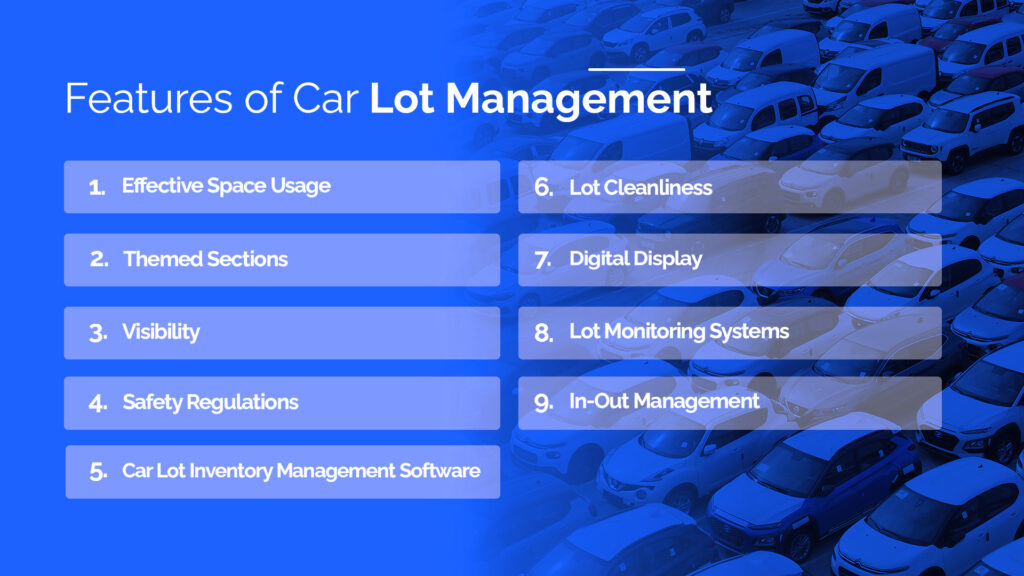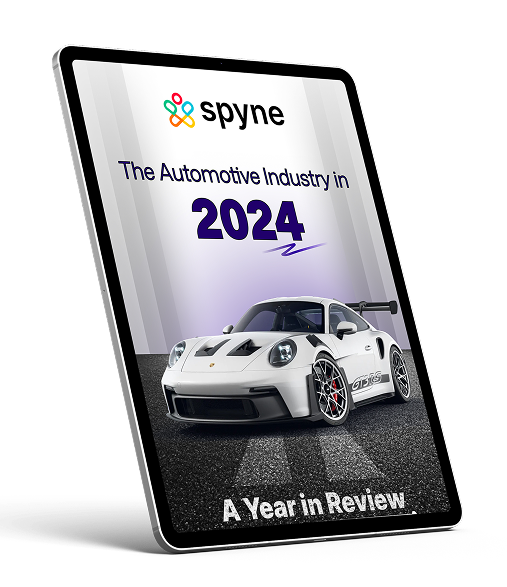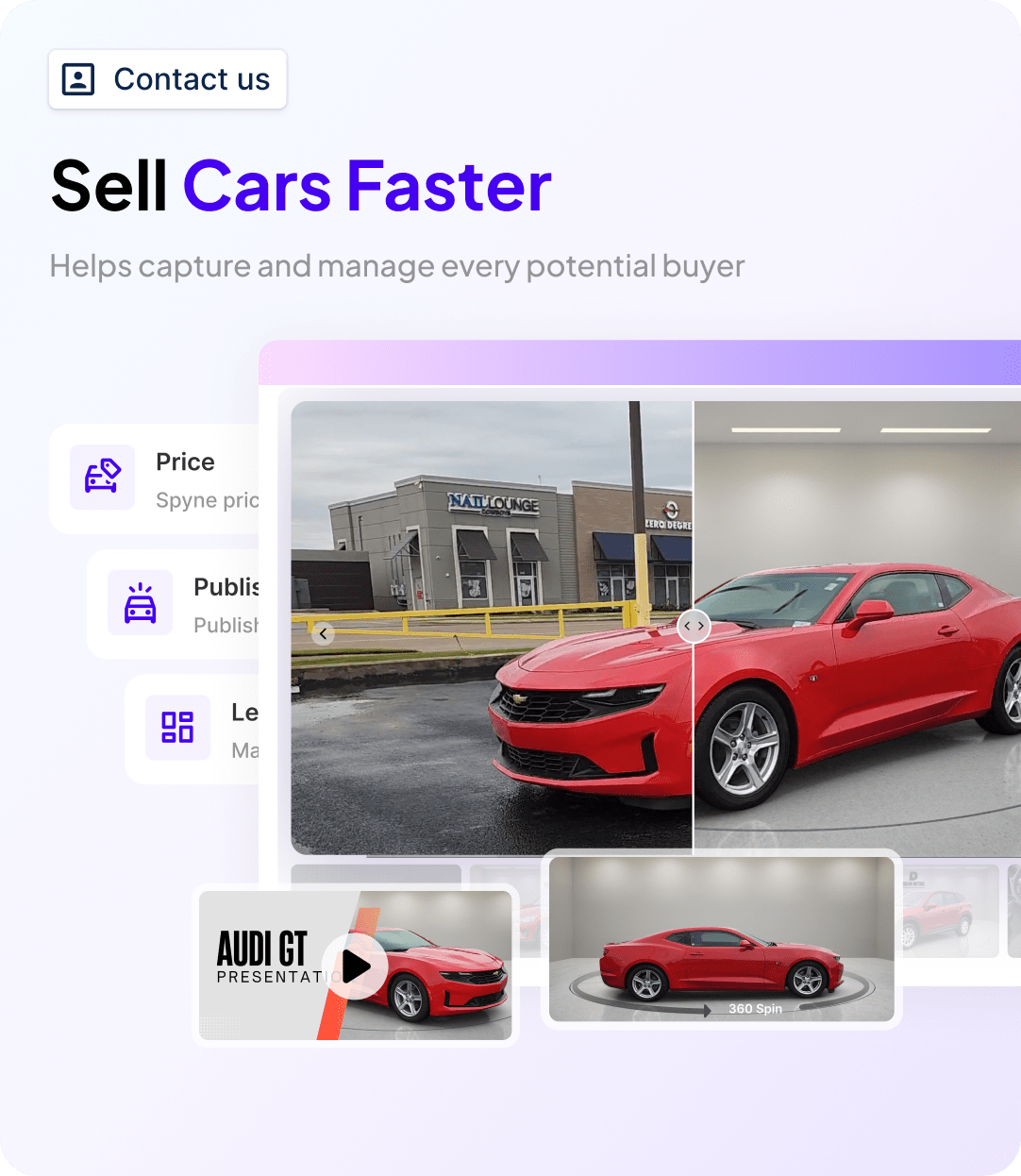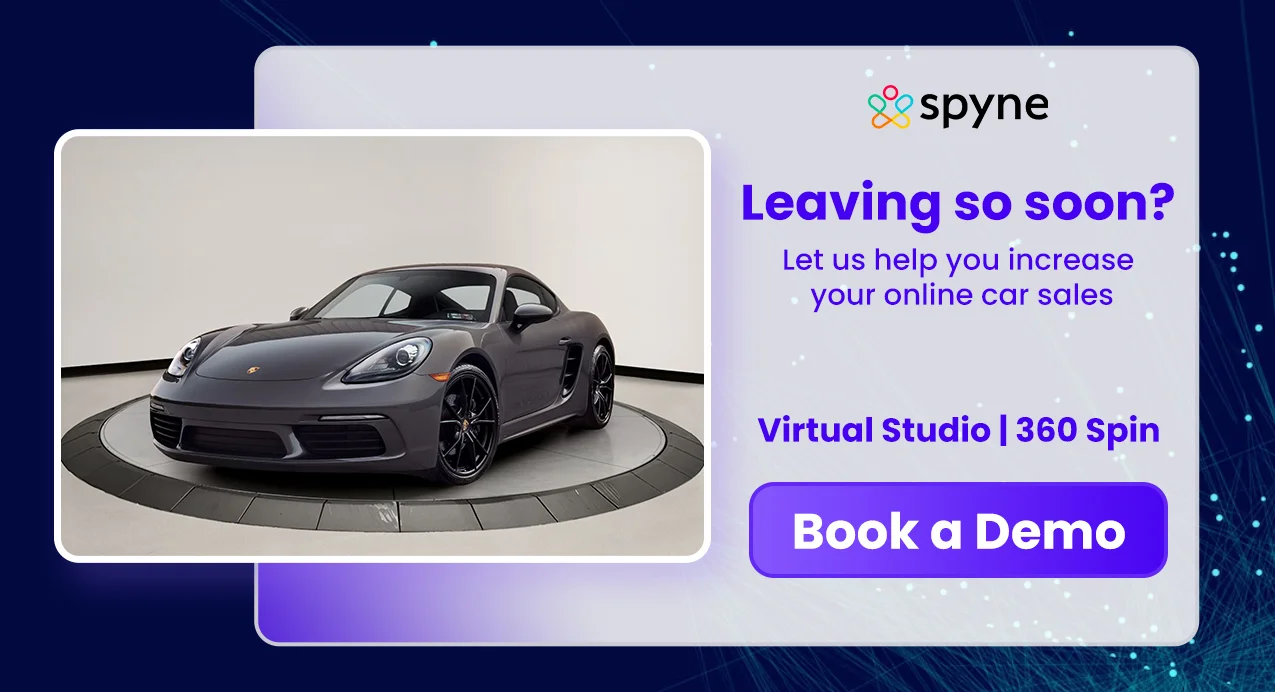Running a successful car dealership requires more than just selling cars. It demands proper strategies and practices to improve overall service, from inventory management to post-sale customer assistance.
Car lot management at dealerships brings a fair share of excitement and challenges. One must acquire distinct skills to ensure every aspect works harmoniously, boosting sales and profitability.
But how can you optimize your inventory and sales process? How do you effectively report, analyze, and forecast? If you are grappling with questions like these, then worry no more. This comprehensive overview serves as a guide to efficient management, addressing every aspect of running a profitable car dealership business.
Interested in doing car lot management free?
Then, read on to learn about our expert-approved practices.
What is Car Lot Management?
It is a system is a set of processes and strategies to manage the physical space, inventory, and operations of an auto dealership lot. It encompasses everything related to how vehicles are displayed, arranged, and tracked within the dealership’s lot.
Effective auto management is crucial for maximum space utilization, improved customer experience, and optimum operational efficiency. It combines car inventory management, logistics, marketing, and customer service elements.
9 Best Practices of Car Lot Management and Organization
The best practices for this are evolving depending on consumer behavior, future market trends, and more. Routine reviewing of your lot management technique is essential to stay up-to-date. Here are some practices that every car dealer must adopt to simplify operations:
1. Keep Records Up-to-date and Accurate
This is the most essential practice for successful car lot management. Only accurate data can fuel reliable decision-making. Ensure you stay updated about vehicle-specific attributes, pricing, current sales trends, customer details, real-time market analysis, aging reports, and more. These insights will allow you to take the necessary actions.
2. Establish a Safety Stock Level
Safety stocks serve as insurance against inventory disruptions. This is more effective in meeting the peak demand of consumers for specific models. It also gives protection against price and supply chain fluctuations.
3. Optimize Your Inventory Turnover Ratio
The inventory turnover ratio refers to the number of times your inventory is sold in a year. Generally, a car dealer must sell the existing stock every 30 days. A car sitting longer than that may incur high inventory costs.
Moreover, fewer consumers will consider your dealership in case of an age-old inventory. Thus, maintain an optimum inventory turnover ratio. Also, if a car has been in your lot for over a month, use the VIN decoder tool from Spyne to highlight its ground-breaking features.
4. Analyse Your Inventory Regularly
As a car dealer, you should always stay informed about what’s on the lot. Routine analysis of your inventory helps you to refine resourcing. You can make data-driven decisions on how to assemble and manage the lot using quick-selling vehicles.
You can also opt for a car lot management app or car lot management software like Spyne to get professional help in monitoring your inventory.
5. Keep Transparent Pricing Models
Pricing is essential for managing a lot and creates transparency. Fair pricing strategies can help your dealership attract more customers and increase income.
6. Tailor Price List Based on Estimated Time-to-Sell
Time-to-sell approach prices work with market demand. Analyzing data lets you find which cars will take longer to sell. These cars will need extra incentives.
On the other hand, high-demand cars can have higher prices. By studying the supply and demand data, you can set prices matching your customers’ willingness to pay.
7. Conduct Research on Consumer Behaviour
Understanding the market for each vehicle can give you an advantage. Buyers do their research before making a decision. Several factors influence their purchasing decisions, including seasonality, pricing, and vehicle color. Analyzing these trends can provide valuable insights and help predict consumer behavior.
8. Monitor Ageing Inventory
Unsold vehicles incur costs related to storage and maintenance. It is essential to stay updated on aging inventory. You can look at test drives, online interest, and promotions. This information may reveal weaknesses in your sales and marketing strategies that make these vehicles stay on your lot.
9. Create a Fail-safe Sourcing Strategy
A key part of managing a vehicle lot is creating a sourcing strategy. This strategy should include where and how often vehicle acquisitions happen, criteria for trade-in decisions, and automotive digital marketing plans.
Inventory and consumer data are essential to this strategy. Keep an eye on current market demand through regular analysis. Building strong relationships with suppliers also helps this process.
Features for Successful Car Lot Management
Car lot management is an all-inclusive process. Following are some of car dealer inventory software top features:
- Practical Space Usage: Organize cars to make the most of the space while allowing customers and salespeople to see and access them easily.
- Themed Sections: Group cars by make, model, price range, or type to make shopping easier for consumers.
- Visibility: Place high-demand vehicles or featured models near the entrance in the most visible areas.
- Safety Regulations: Make sure your lot meets safety standards with proper signs, clear paths, and safe areas for vehicle operation.

- Lot Cleanliness: Clean the lot, vehicles, and customer areas regularly to maintain a professional tone.
- Digital Display: Use digital displays or touchscreens to show vehicle prices, features, or financing options as customers walk around.
- Lot Monitoring Systems: Utilize cameras, sensors, or GPS to watch vehicle movements, ensure security, and manage car flow.
- In-Out Management: Keep track of vehicles coming in and leaving the dealership, be it trade-ins, factory deliveries, or customer pickups.
- Car Lot Inventory Management Software: Car dealer management software tracks vehicle inventory, manages orders, and maintains real-time updates.
Benefits of Efficient Car Lot Management
Efficient management gives your dealership a competitive advantage. But there’s more to it. Take a look:
- Optimized car lot management ensures timely stock turnover and reduces overhead costs, gaining you more profit.
- Since dealers deck up their inventory aligning with customer demands, it improves sales and customer satisfaction.
- With real-time inventory monitoring, dealers can alleviate the risk of errors.
How to Optimize Your Inventory and Manage Your Inventory Easily?
Optimizing your inventory is crucial to minimize loss and maximize sales. Streamline your vehicle inventory management software in 5 simple steps:
1. Break down your inventory by vehicle types, makes, models, manufacturing year, and condition.
2. Monitor sales patterns and focus on stocking more high-selling vehicles.
3. Update your inventory with new arrivals and move older vehicles by offering discounts.
4. Conduct real-time inventory tracking using car lot inventory management software for instant visibility.
5. Ensure that costs and profit margins are monitored regularly.
How Spyne Can Help?
Spyne can power up your dealership’s digital presence. With Automated content generation and a virtual showroom, Spyne can transform your automotive business significantly. And that’s not all! Here are some of our exciting dealer management system features:
1. AI-powered Inventory Management
We incorporate machine-learning algorithms to analyze various data, be it sales history, real-time inventory levels, or market trends. This way, we predict future automotive demands and adjust stock levels to optimize inventory.
2. CRM Software
Our in-house auto dealer CRM software precisely monitors consumer behavior to tailor marketing and sales strategies accordingly. With our CRM suite, dealers can facilitate personalized recommendations and automate lead scoring to provide a better experience to consumers.
3. Uniform Syncing Across Channels
Since you are restocking your inventory per consumer demands, it is crucial to keep them informed. While manual information processing can take up to days, Spyne can do it in seconds. Post your content about new arrivals, restocking, or clearance sales across various media in a single click with Spyne.
Conclusion
More than 400+ car dealerships have flourished their business with Spyne. You can also contact us for real-time analytics and cost-saving techniques. You can use this data for effective car lot management.
















